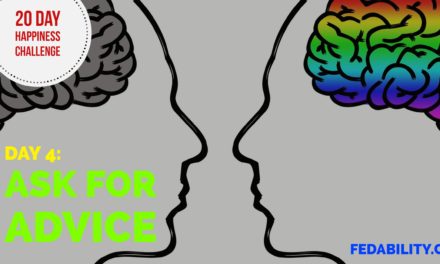In my experience, making the jump from a mid-level to a senior level position in HR is one of the toughest in terms of career growth. As you know from an HR perspective, the number of positions available become fewer. As a result, moving up in one’s career becomes even more complex than the usual jumble of skills, hard work, and good timing. It becomes a bit of a numbers game.
More than ever your branding as a government employee takes a larger role in your career growth. And, it’s also time to make sure you have the required skills when the position becomes available.
Not in HR? That’s ok. Many of these skills will generalize. Or, you can check out our prior post on why every government employee should know about contract management and acquisition.
Our jobs in HR often depend on our ability to break down a job into it’s parts and pieces. Our ability to understand different levels of proficiency. But, moving from a GS 13 to a GS 14 is actually a large jump in the skills that are needed. This is because the complexity and amount of judgement needed to perform the role is quite different. In terms of career growth, this may be the hardest jump of all.
In this post, I will focus on the core skills that distinguish someone at an mid-level GS13 from a GS14 in HR. However, if you’re an entry level HR professional, you may want to check out our prior post specifically for IDPs for entry-level HR professionals. Or, if you’re looking to move from a mid-level position into a GS 13, you might want to check out our post for mid-level HR career growth.
IDPs for career growth into senior levels of HR
According to the Office of Personnel Management (OPM), there are three skills that distinguish a GS13 in HR from a GS14. Considering that many of the prior moves up the career ladder required more individual skills, focusing on 3 may seem like a breeze.
I’m here to tell you – it’s not a breeze and it’s going to require some dedication to your career growth to get there.
Differentiating between a GS13 and a GS14
What is the differences in skills needed for an HR professional at the GS 13 level versus the GS 14? I started with the Human Resources Management competency model from OPM. I looked only at the general competencies needed (not the specialized).
Three areas of skills according to OPM include:
- Change management
- Project management
- Workforce planning
Change management
According to OPM, change management is defined as: Knowledge of the impact of change on people, processes, procedures, leadership, and organizational culture; knowledge of change management principles, strategies, and techniques required for effectively planning, implementing, and evaluating change in the organization.
Foremost, it’s important to understand how you and others react to change. Check out our prior post that goes through the different kinds of change-adopters and responses to change.
The other thing to remember is that change management as a subject is huge. There’s entire college degrees that focus on the topic. But, there’s two skills you can actually learn relatively quickly that will have a huge impact.
1. Communication plans
It amazes me how little time is spent thinking through how to communicate a large change initiative. Or, that it needs to done methodically. Or, that different stakeholders need different kinds of information – and that that information may need to come from different sources. That’s where a change management communication plan comes in.
It’s a road map for who, how, and when something will be communicated.
For instance, I know that in some instances an email from me (in training) is not going to have has much weight as someone on the executive team. I may ultimately be the one to write the communication. However, it will be sent from someone else.
Here’s a good wiki on how to create a communication plan. However, if you google ‘communication plan template’ you will find many options that you can adapt to your own needs.
2. Assess impact of change
Seldom do people take the time to consider the broader impact of a change. Oftentimes, they’re so busy thinking about how to execute the change – they forget that assessing the impact is a vital component of that execution. Again there’s lots of templates you can take a look at.
The most simple assessment might be to use a fishbone diagram. Although it’s typically used for root cause analysis, it’s useful to consider change impact because it takes into account people, processes and tools.
A more complicated template is offered by Northwest Territories. For the most part, it’s probably more than you need but it does get you thinking about how different changes may impact your agency.
Project management
Project management is defined by OPM as: Knowledge of the principles, methods, or tools for developing, scheduling, coordinating, and managing projects and resources, including monitoring and inspecting costs, work, and contractor performance.
As you know, I seldom recommend formalized training. However, this is one of those topics that I think would most quickly get you competent with a formal class.
A lot of the courses are aimed at getting the Project Management Professional (PMP) certificate. I don’t personally think the certificate helps in day-to-day work unless you are formally in a project management role. But, it may be something your agency values and a requirement for career growth.
If there’s no funding for training and you don’t want to pay for it yourself – you might check out Project Management for the Unofficial Project Manager: A FranklinCovey Title. It’s a balance between basic project management skills and the official “PMP” certification.
Workforce planning
OPM defines workforce planning as: Knowledge of HR concepts, principles, and practices related to determining workload projections and current and future competency gaps to align human capital with organizational goals.
Similar to change management, there are entire college and graduate degrees to learn and practice workforce planning.
If this is a topic entirely new to you, I’d recommend at least reading through OPM’s Workforce Planning Model. For a more detailed overview, I really like SHRM’s review of the steps of workforce planning.
Frankly, this kind of work is often contracted out to a consulting firm. Even HR departments that have knowledgeable subject matter experts (SMEs) just don’t have the staffing to be able to conduct a full fledged workforce planning initiative.
So, to have an understanding of the steps will help you know what should be done. It will also help you assess whether the plans put forward in a request for proposals (RFP) covers the appropriate steps.
Challenge to take action to create an IDP for HR professionals
- Download the Fedability IDP template for Mid-level to Senior-level HR professionals.
- Complete the template by selecting up to 1-2 competencies. Since the competencies are so large of an knowledge area to pick up – less is more in terms of career growth.
- Identify a couple methods to develop the competencies you picked. Not sure how to do it? The template offers a list of methods to develop your skills. Or, you could try googling it. “How to develop my project management skills” Read a few ideas that pop up. Or, send me an email and we can talk through a couple ways to build those skills.
- Tell us what you come up with in the comments below!





